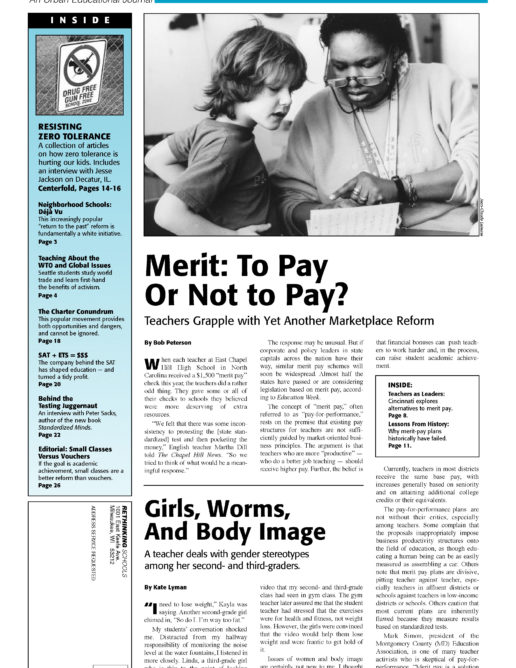Preview of Article:
Neighborhood Schools
Plans to abandon public transportation to promote desegregational most universally are framed as ending “forced busing.” This phrase is one of those curious word combinations – like “critical thinking” or “authentic assessment” or “school choice” – that carries a built-in opinion about the value of what is being described. “Forced busing” obviously is something bad, and its widespread use suggests satisfaction with the movement to end it. In addition, the phrase assumes an illegitimate use of government power – one that denies the freedom to attend neighborhood schools and coerces attendance elsewhere. Yet exactly who has been coerced is a question that often gets finessed. During the 1972 presidential campaign, the white voters attracted to George Wallace certainly knew the answer when he colorfully and consistently denounced busing as “social scheming” by “anthropologists, zoologists, and sociologists.”2 The fundamental problem with mandatory busing was that it interfered with what many whites perceived as their right to separate schools – either by requiring them to bus out of their neighborhood schools or by permitting Blacks to bus in. Busing was not required by the Supreme Court until 16 years of experience beyond Brown v. Board of Education made it clear that white resistance to desegregation in many cities would perpetually confine African Americans to separate schools.
The notion that neighborhood schools are some how innocent of governmentpower is also patently false. In northern cities, school district authorities’ willful gerrymandering of attendance areas produced segregation where the location of schools naturally would have yielded integration. Moreover, there was nothing “natural” about suburban schools like mine. They were shaped by federal decisions to build highways rather than urban infrastructure and to support racially homogenous enclaves through the mortgage policy of the Federal Housing Authority.
THE COURTS
Historical amnesia is not the only reason opposition to busing was once broadly identified with racism but is now widely perceived as promoting the common good. Another reason is that the courts now legitimate such a perspective. An activist federal judiciary that once struck down legally enforced segregation and ultimately struck down ineffectual desegregation plans now significantly bears the influence of conservative Reagan and Bush appointees .These transformed federal courts have been declaring unitary those school districts that had been under desegregation orders. Neither existing segregation nor grave racial disparities in student performance has deterred the courts from releasing urban districts from their oversight. Relatedly, there are many cities where whites hold political power but the school systems enroll mostly students of color. The legal climate is ideal for them to restore neighborhood public schools in the hope of attracting whites with the implicit promise of racial exclusivity. Furthermore, what Gary Orfield and Susan Eaton refer to as “dismantling desegregation” simply is not evoking much protest or even contention. 3
This is a far cry from the mid-1950s when African Americans in Yazoo City, Mississippi, and other southern towns risked their jobs – and lost them – for petitioning for desegregated schools.It is distant as well from the mid-1960s when massive demonstration sand boycotts hit Chicago, Milwaukee, New York City, and other cities to protest the failure of school districts to desegregate.The basic explanation for the lack of organized opposition tore segregation, of course, is that desegregation hardly has been an unqualified success for African Americans. Put simply, it has been implemented on terms favorable to whites, and even privileged treatment has not been sufficient to keep many whites from choosing private schools or from moving to the suburbs. For some African-American students, their disproportionate burden of busing has been compensated by access to resources and opportunities unavailable in neighborhood schools. For others, however, it has meant either busing to poor quality and nearly segregated schools far from home or traveling to schools internally segregated by tracking that provide challenging curricula almost exclusively to white students.
DUAL APPROACH
Certainly the failure to achieve or preserve racially balanced schools in many districts, and the failure to treat African-American students equally in others, casts doubt on unequivocally continuing a policy of busing for the purpose of promoting desegregated schools. Depending on the context, in fact, African Americans over thepast 200 years have sought equal education by alternately pursuing desegregation and separate-but-equal schools. Beginning in the late 1960s, for example, many African Americans sought community control of their schools out of frustration with the slow pace of desegregation and out of anger at the hostile treatment of many Black students in predominantly white schools. Three decades earlier, W. E. B. Du Bois backed away from his previous insistence on desegregation in an often-quoted passage that tactically supported separate schools:</p

